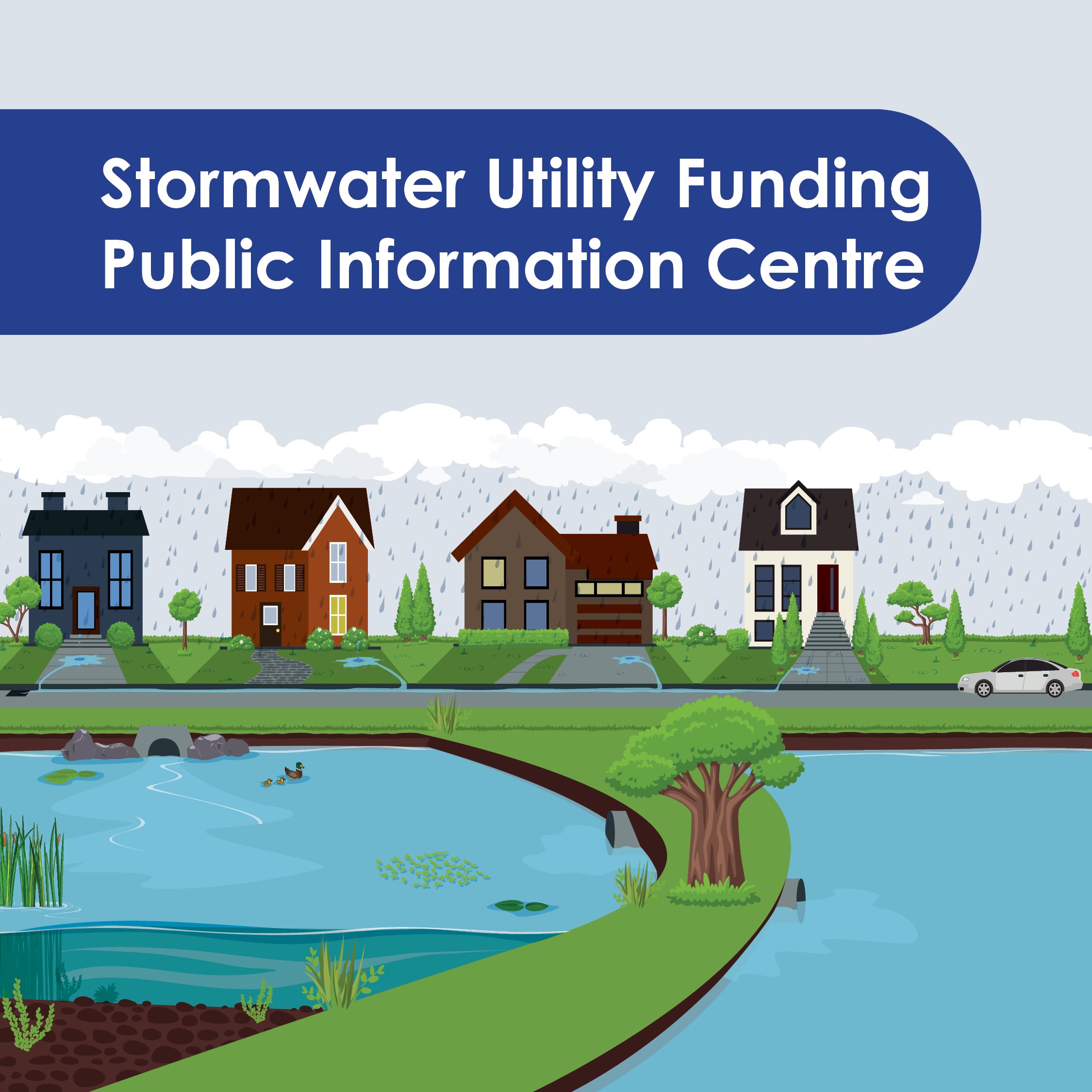Stormwater Utility Funding Strategy
The Town of Bradford West Gwillimbury is conducting a study to review and recommend a sustainable and reliable funding source to support the Town’s stormwater management program.
Stormwater is the runoff from rain and melted snow that flows over properties and into storm drains. Normally, stormwater soaks into the ground and becomes groundwater through a process called infiltration. However, as it moves, it collects debris and pollutants from rooftops and paved surfaces, which are then carried into storm drains and local waterways. In an urbanized area like the Town of Bradford West Gwillimbury, impermeable surfaces, such as driveways, parking lots, streets, and roofs prevent stormwater from being absorbed into the ground. This disruption in the water cycle causes stormwater to flow quickly into drains and sewers, eventually reaching our lakes and rivers, which can lead to flooding and other environmental impacts.
A stormwater utility funding strategy offers a reliable and sustainable method for addressing the community’s environmental and growth-related concerns. It ensures aging infrastructure is maintained and supports the development of new systems to accommodate planned growth in a financially responsible way.
View the Annual Stormwater Report
Timelines
Frequently Asked Questions

Thank you to those who attended our Public Information Centre (PIC) on September 23 to review the Town's Stormwater Utility Funding Strategy.
Your feedback is important to us, and we want to hear from you. You can review the meeting presentation here and share your comments on the PIC by taking a few moments to fill out our feedback form below.
Contact Information
Town Contact:
Tony Desroches
Director of Infrastructure Services
tdesroches@townofbwg.com
Contractor:
Civica Infrastructure Inc.
Andrew Kerr
Project Manager
akerr@civi.ca
Stormwater Management
The Town of BWG has stormwater management facilities (SWMF) in place to help protect human health, property, and the environment. SWMF are very important in order to decrease the phosphorus load in Lake Simcoe. Properly working SWMF filter stormwater, decreasing the environmental impacts of everyday activities such as:
- lawn watering
- car washing
- water runoff
- precipitation
- improper disposal of household hazardous wastes
- road salt application
There are many types of SWMFs within the Town. Below is a short description of each of the SWMF common in the Town of BWG:
How Does Stormwater Travel to a SWMF?
Stormwater enters a SWMF by flowing through a stormwater sewer, catchbasin or directly into the SWMF. It is important that only stormwater enters any part of a SMWF.
Yellow Fish Road
BWG has partnered with the Lake Simcoe Region Conservation Authority (LSRCA) to bring the Yellow Fish Road program to the Town. This program is conducted by LSRCA and provides information to the public regarding stormwater, mainly focused around school aged children. This program helps children identify what a stormwater catchbasin and manhole are and where stormwater travels from in their neighbourhood. The children paint yellow fish next to storm sewers in their neighbourhood to help raise awareness that stormwater flows directly into the environment, and that keeping other materials out of catchbasins helps protect the environment.

How Can You Help Protect the Environment?
You can help prevent the amount of chemicals and debris that get into SWMF and stormwater catchbasins after rain or ice/snowmelt.
Here are some things you can do:
Contact Us
Administration
100 Dissette Street, Unit 7 & 8, Bradford, ON, L3Z 2A7, Map this Location
Phone: 905-775-5366, Send us an email





